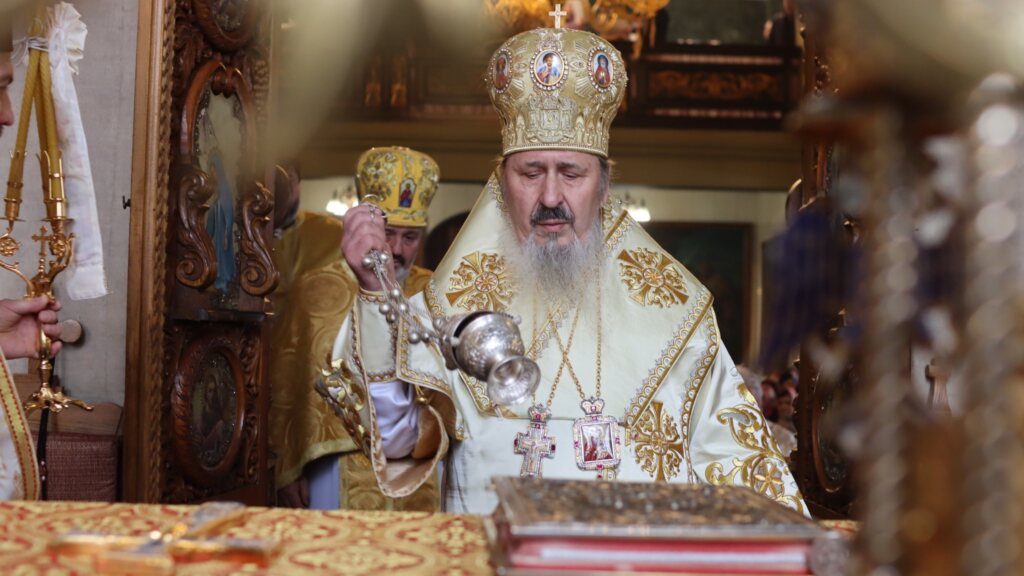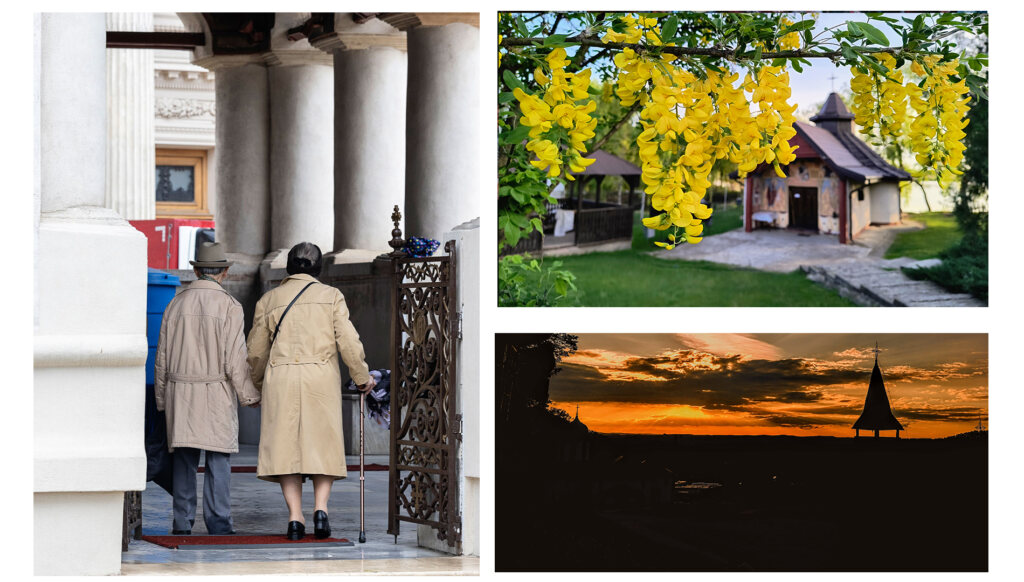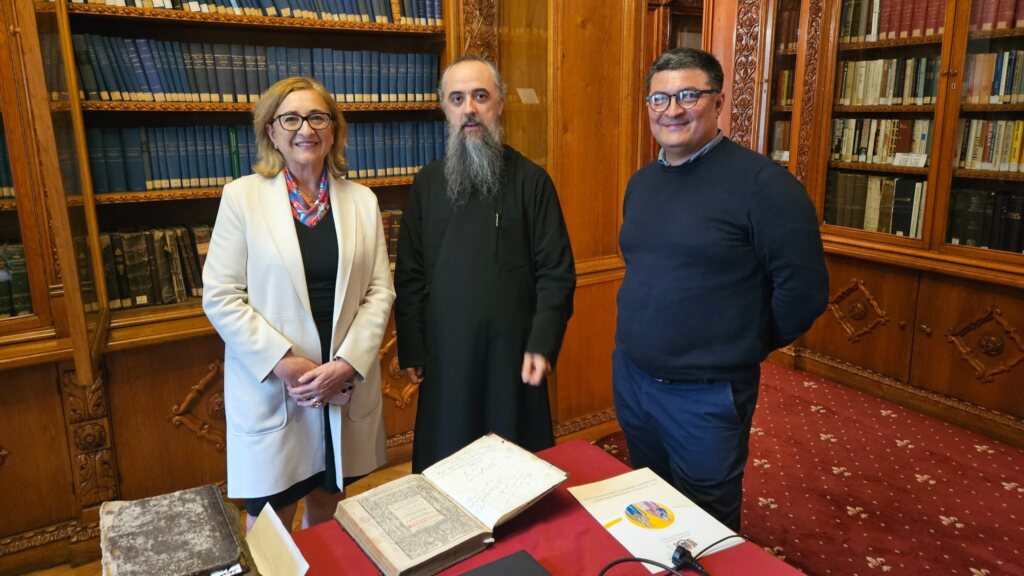Today, 6 January 2014, feast of the Baptism of the Lord, His Beatitude Daniel, Patriarch of Romania, celebrated the Divine Liturgy in the Patriarchal Cathedral. His Beatitude celebrated together with His Grace Varlaam Ploiesteanul, Assistant Bishop to the Patriarch and Secretary of the Holy Synod and His Grace Varsanufie Prahoveanul, Assistant Bishop to the Archdiocese of Bucharest, together with the priests and deacons of the Patriarchal Cathedral.
His Beatitude Patriarch Daniel delivered a sermon in which he emphasised three great truths of the evangelical pericope of the Gospel according to Matthew: “First of all we see the never ending lowliness of Jesus Christ who although has no sin goes to receive the baptism of repentance for forgiving the sins from Saint John the Baptist. Secondly, we see that the One who goes to be baptised in the river Jordan is not an ordinary man, but the Son of the eternal God who was made man out of love for the humans and for their salvation. Thirdly, we see that everything Jesus Christ, our Saviour, does as Saviour reveals the unlimited love of the Most Holy Trinity. These three great truths are explained in the life of the Church, in her prayers, sermons and chants.”
The Baptism of repentance that Saint John the Baptist practiced was a preparation for the Baptism of the Lord, and then for the Christian Baptism, His Beatitude showed, saying: “The Baptism of repentance was awareness of the need to have the sins forgiven. It affirmed both the sinful nature of the humans and the need to rid of it. Because of the fall of the forefathers Adam and Eve we inherited a sick nature, namely a nature inclined to sin, to forget about God, alienate from God and infringe the will of God. Thus, the baptism of repentance was a preparation for wishing to have the sins forgiven and renew the life”.
“Christ, the Lord, comes close to John and John tells Him, hesitating to baptise Him “I need to be baptized by you”, but Jesus insists and says “Let it be so now; it is proper for us to do this to fulfill all righteousness”. What is righteousness in this sense? It is God-the-Father’s plan for the salvation of the world accomplished through the Son, through everything He says and does. It is God’s plan for the salvation of the world achieved through the Son, through everything He does and says. Although Jesus Christ has no sin, He asks for the baptism of repentance for sins not only to show His complete lowliness, but also to show that He will take the sins of the world over Him. This is why, on another occasion, Saint John the Baptist confesses that Jesus Christ is the Son of God who takes away the sins of the world; He took them over Him, and showed them that they were a consequence of the alienation of the humans from God and disobedience to God, but He was obedient till death and even to the death on the cross, and this is why He healed the human nature from disobedience, from the alienation from God. He takes the sins of the world over Him and shows through His sacrifice on the Cross and Resurrection from the dead an obedient nature to God which becomes later on, through Resurrection, participant – the human nature – in the eternal life, love, and glory of the Most Holy Trinity. Thus, His much lowliness and righteousness – namely the accomplishment of the iconomy or God’s plan for salvation – is shown in His coming to John to be baptised with the baptism of repentance for forgiving the sins. At the same time, this righteousness of the plan of God is also reflected in the fact that Jesus is introduced now to the crowd by Saint John the Baptist”, His Beatitude said.
To end with his speech, His Beatitude Patriarch Daniel emphasised the fact that the Baptism of Christ is the basis of the Christian baptism and of our adoption according to grace in God-the-Son through the work of the Holy Spirit: “Everything Christ does for the humans’ salvation shows the love of the Most Holy Trinity. When He said: “This is my Son, whom I love; with him I am well please.” He referred not only to the Divinity of the Son, but also to His love for the human nature of the Son. It is here that the humanity of the Son was solemnly adopted. He is the Beloved Son as God-the-Son, as well as God-the-Man, and so, the Baptism of Christ is the basis of the Christian baptism and of our adoption according to the grace in God-the-Son, in Jesus Christ, through the work of the Holy Spirit. The Holy Spirit appears only once in Jesus’ life as dove, at His Baptism. Why that? It is because the dove reminds Noah’s flood; when it was over it appeared as a sign of reconciliation carrying a branch of olive in its beak. The Holy Spirit who appears at the river Jordan as dove shows us that we get reconciliation through baptism”.
Then Jesus came from Galilee to the Jordan to be baptized by John. But John tried to deter him, saying, “I need to be baptized by you, and do you come to me?” Jesus replied, “Let it be so now; it is proper for us to do this to fulfill all righteousness.” Then John consented. As soon as Jesus was baptized, he went up out of the water. At that moment heaven was opened, and he saw the Spirit of God descending like a dove and alighting on him. And a voice from heaven said, “This is my Son, whom I love; with him I am well pleased.






